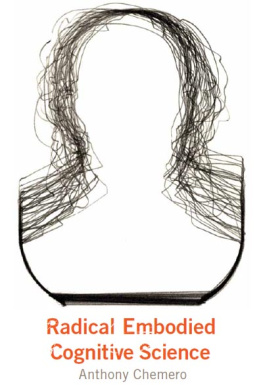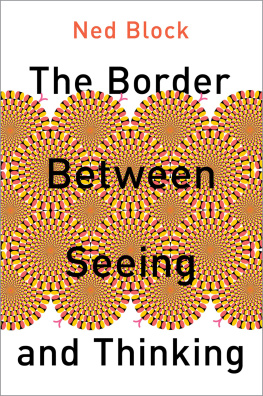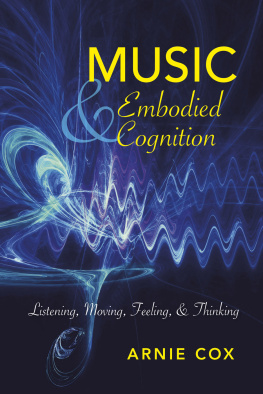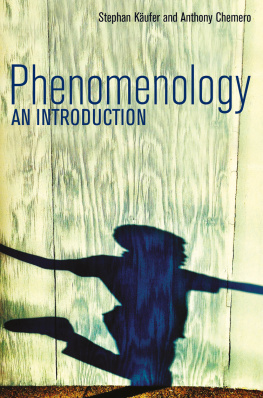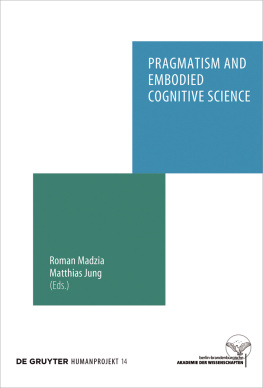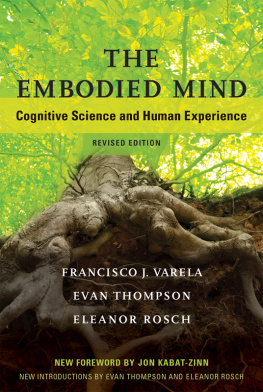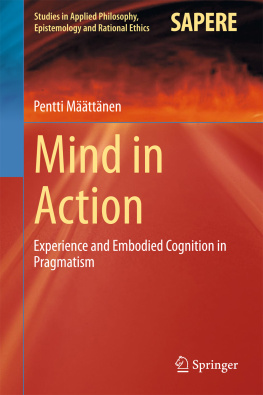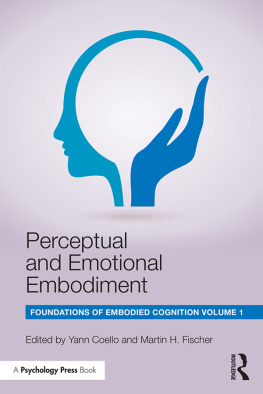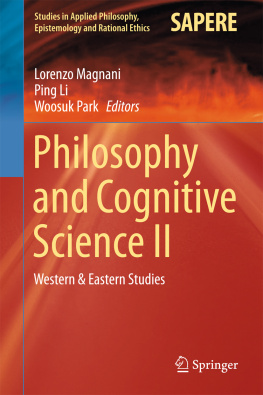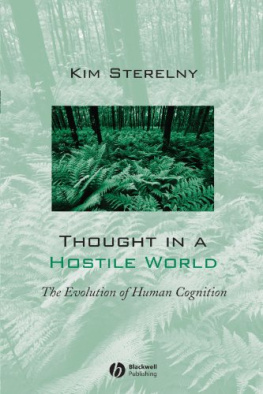
Radical Embodied Cognitive Science
Anthony Chemero
A Bradford Book
The MIT Press
Cambridge, Massachusetts
London, England
2009 Massachusetts Institute of Technology
All rights reserved. No part of this book may be reproduced in any form by any electronic or mechanical means (including photocopying, recording, or information storage and retrieval) without permission in writing from the publisher.
MIT Press books may be purchased at special quantity discounts for business or sales promotional use. For information, please email or write to Special Sales Department, The MIT Press, 55 Hayward Street, Cambridge, MA 02142.
This book was set in Stone Serif and Stone Sans on 3B2 by Asco Typesetters, Hong Kong, and was printed and bound in the United States of America.
Library of Congress Cataloging-in-Publication Data
Chemero, Anthony, 1969-.
Radical embodied cognitive science / Anthony Chemero.
p. cm.(A Bradford Book) Includes bibliographical references and index.
ISBN 978-0-262-01322-2 (hardcover : alk. paper)
1. PerceptionResearch. 2. Cognitive science. I. Title.
BF311.B514 2009
153dc22 2009001697
10 9 8 7 6 5 4 3 2 1
Contents
Preface: In Praise of Dr. Fodor
Acknowledgments
I Stage Setting
1 Hegel, Behe, Chomsky, Fodor
2 Embodied Cognition and Radical Embodied Cognition
II Representation and Dynamics
3 Theories of Representation
4 The Dynamical Stance
5 Guides to Discovery
III Ecological Psychology
6 Information and Direct Perception
7 Affordances, etc.
IV Philosophical Consequences
8 Neurophilosophy Meets Radical Embodied Cognitive Science
9 The Metaphysics of Radical Embodiment
10 Coda
Notes
References
Index
Preface: In Praise of Dr. Fodor
Jerry Fodor is my favorite philosopher.
I think that Jerry Fodor is wrong about nearly everything.
Knowing these two facts about me should be helpful for those who wish to understand what this book is all about. My goal is that this book is for non-representational, embodied, ecological psychology what Fodors The Language of Thought (1975) was for rationalist, computational psychology. The Language of Thought was a true landmark in (the philosophy of) cognitive science. It set out in great detail just what it is to do computational psychology, what some of the benefits to doing computational psychology are, what some of the results of computational psychology (c. 1975) were, and what the philosophical consequences of the computational approach are. It is admirably clear and rigorous, and also very funny. (See, for example, his discussion of the dispositional properties of Wheaties.) I would argue that The Language of Thought is the very best work ever done in the philosophy of cognitive science.
I warn you in advance that this book is not that good. I can live with that. I have set lofty goals for this book, fully aware that I would not reach them. My assumption was that if you aim for the stars, you might end up in low orbit, or in a deluxe apartment in the sky. So, although not as good, this book really is intended as a counterpart to Fodors. Like his book, I describe a way one might pursue the scientific study of cognition and lay out the philosophical consequences of studying cognition this way. Like Fodors book, the purpose is primarily to say what this way of doing cognitive science is, warts and all. Only secondarily do I try to convince you that what I describe is the right way to pursue the science of the mind. I am more than happy to accept the following reaction: If that is what non-representational, embodied, ecological cognitive science is all about, Ill stick with computationalism. Maybe Ill become a pastry chef instead. In other words, it could be that this book is one big modus tollens. If so, so be it. As Fodor himself puts it, Hate me, hate my dog (1990, xii).
The main way that this book is different from Fodors, apart from the already-apologized-for difference in quality, is the nature of the cognitive science it describes. I suspect that the approach described and defended here, which I call radical embodied cognitive science. In it, I argue that primarily conceptual arguments against scientific approaches should be taken with a grain of salt, and never as dispositive. This is true in the case of arguments against the computational approach (Dreyfus 1964, 1972; Searle 1980) as well as arguments against radical embodied cognitive science (Clark 1997, 2008; Markman and Dietrich 2000a,b). Having argued against space-making arguments, I do not argue against other theories to argue for radical embodied cognitive science.
In attractive. Radical embodied cognitive science, very roughly, is the thesis that cognition is to be described in terms of agent-environment dynamics, and not in terms of computation and representation. The point of these chapters is to show that radical embodied cognitive science deserves a place at the cognitive science table, alongside more traditional computational approaches.
In the second part of the book, I explain just what it takes to embrace radical embodied cognitive science. One of the things I try to make clear is that it is actually very difficult to reject internal representations, and that radical embodied cognitive science must be more radical than most of its proponents realize. Representationalists can, and do, claim that things in agents are representations, even when they have few or none of the trappings of classical representations and even when calling them such plays no explanatory role. (See, e.g., Markman and Dietrich 2000a,b; Wheeler 2005.) The way to avoid this problem is to argue for a particular explanatory stance toward cognitive systems and models of them. To defend radical embodied cognitive science, one must take up what I call the dynamical stance, a methodological commitment to explaining perception, action, and cognition dynamically and without referring to representations. A strategy similar to this has been employed with considerable success throughout the cognitive sciences, including in studies of perception, motor control, speech, and development. Despite this success, and the promise of considerable future success, there is a particular problem for dynamical cognitive science that is not faced by computational and representational explanation: the problem of discovery.
The problem of discovery is not a new problem: it first sprang up in a debate between Mach and Boltzmann at the beginning of the twentieth century and has been discussed extensively in the philosophy of science. (See, e.g., Hanson 1958.) The problem boils down to the way in which new hypotheses are generated for testing. Since dynamical cognitive science is a commitment to methodology, it is instrumentalist. That is, it has no necessary connection to any particular posit about what its subject matter is like. The dynamical stance, like Dennetts stances on which it is based, is blissfully metaphysics-free. Computationalism and representationalism, though, are not: they are tied to the posit that the mind (or brain) is a computer and full of representations being acted upon by algorithms. This background assumption has been extraordinarily productive in the generation of new hypotheses for testing (as well as productive for papers published and new journals). Without such a set of background assumptions, it might seem that the dynamical stance is without a guide to discovery, without a method of systematically generating new hypotheses. This is, I take it, a serious disadvantage, one that might lead some sympathizers back to representationalism and computationalism. (I am psychoanalyzing Andy Clark here.) In short, radical embodied cognitive science has a methodology in dynamical modeling; it also needs a background theory, a theory of what its objects of study are.
Next page
